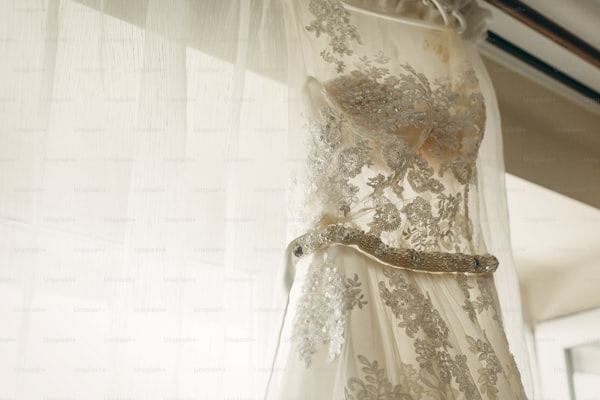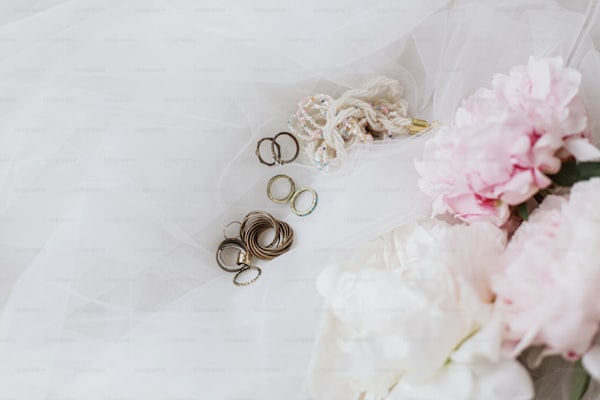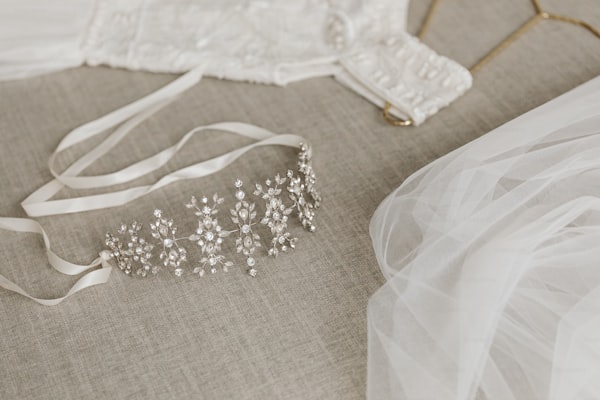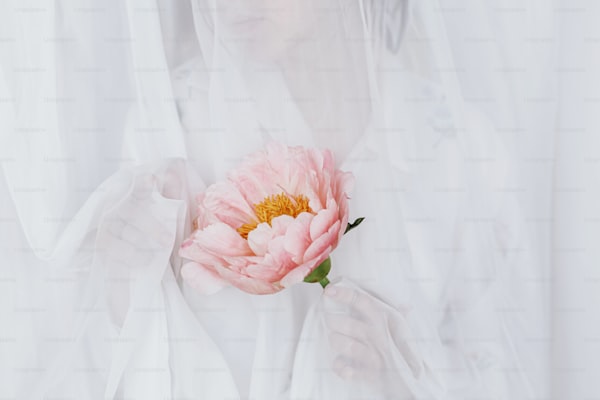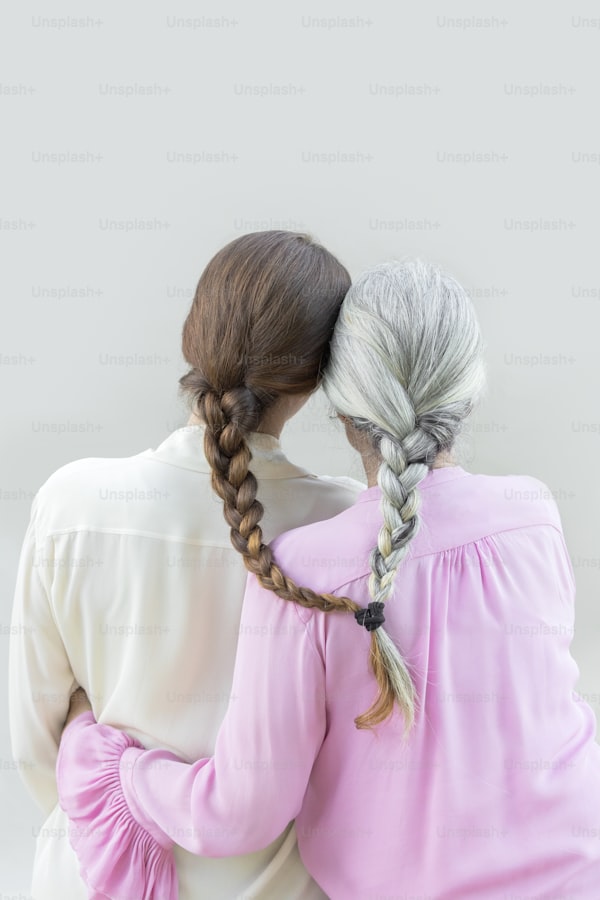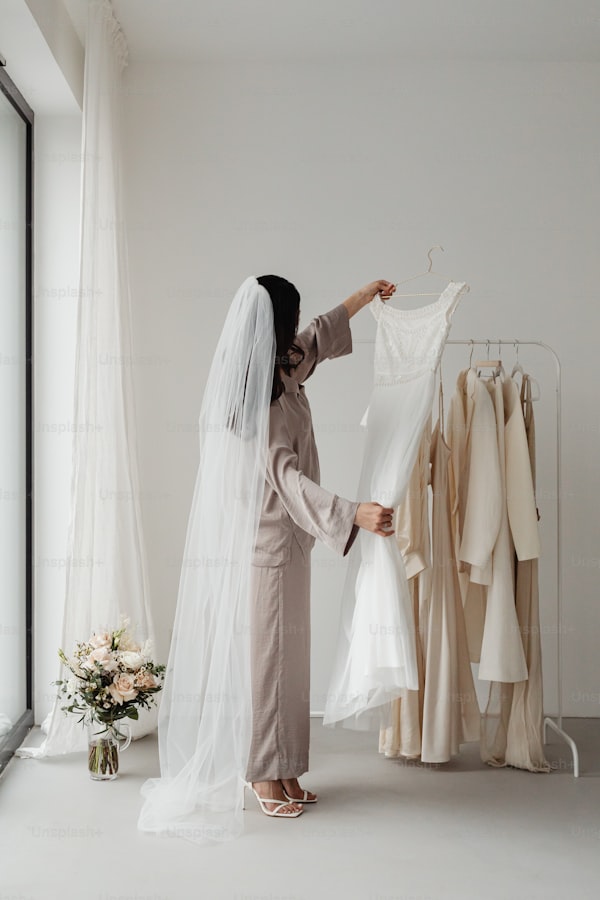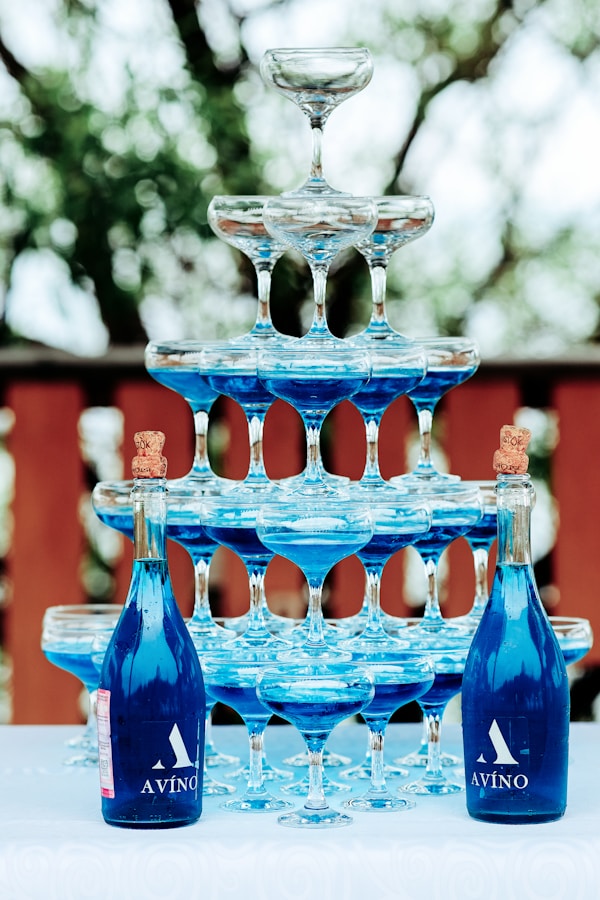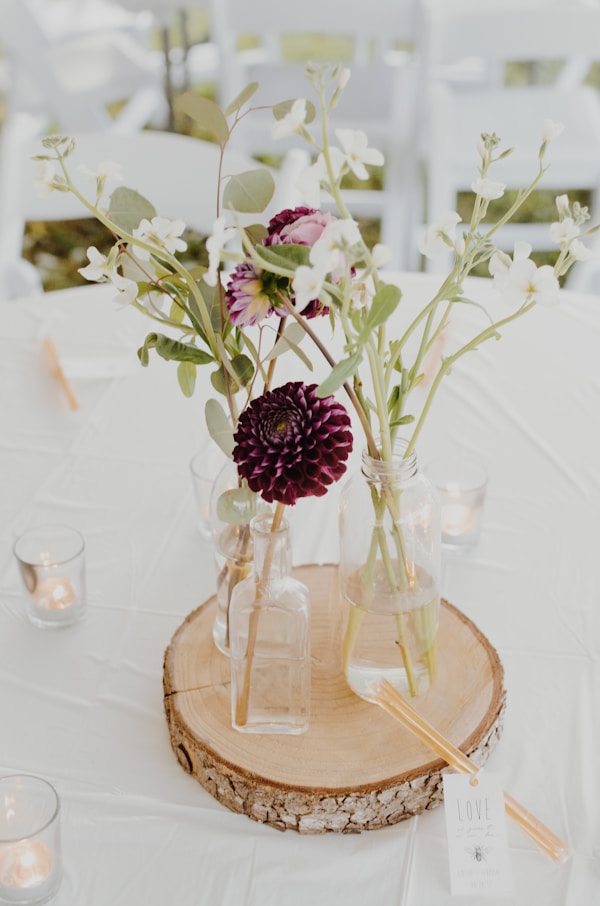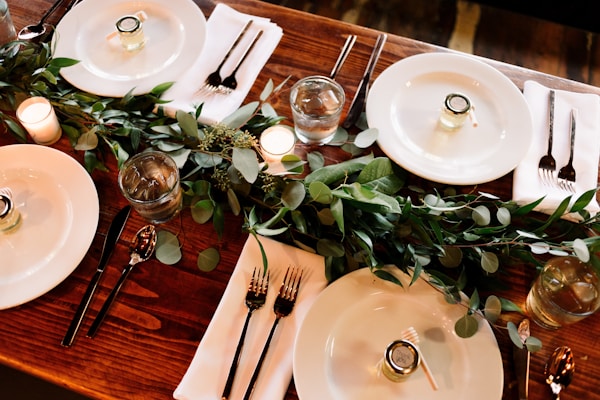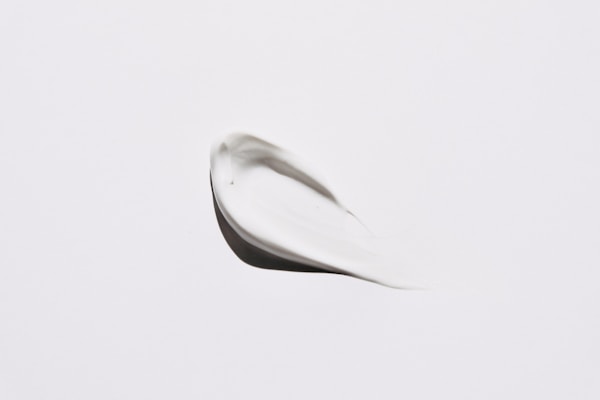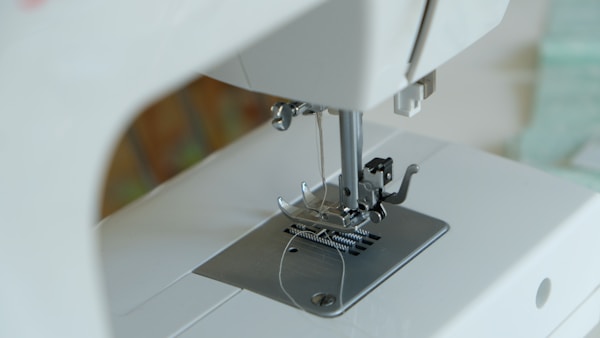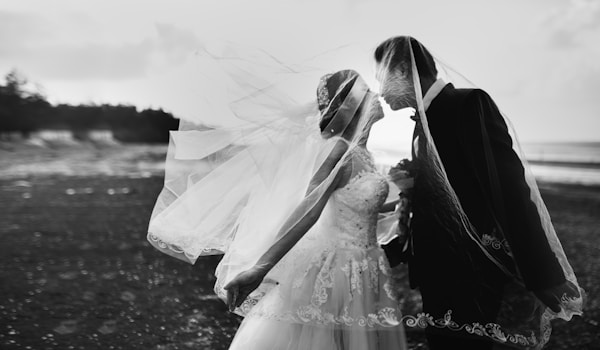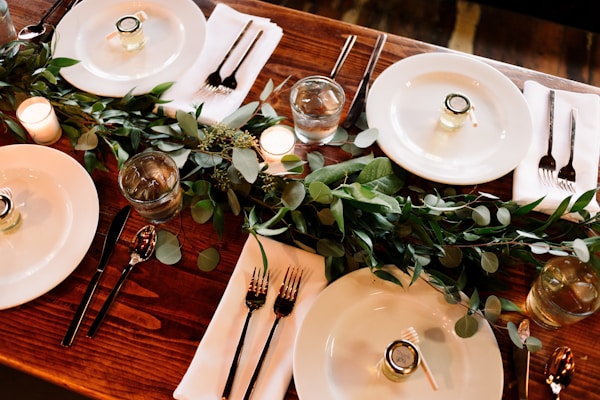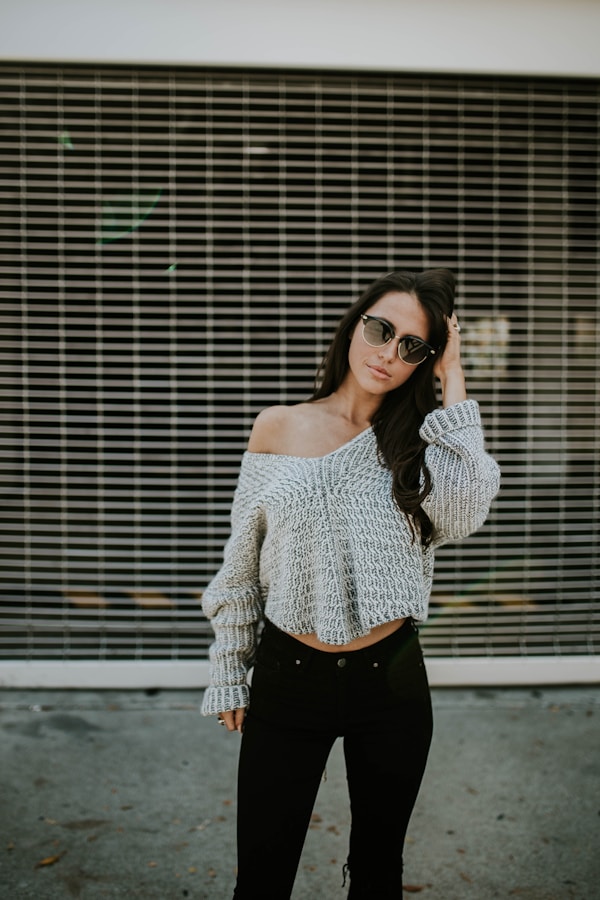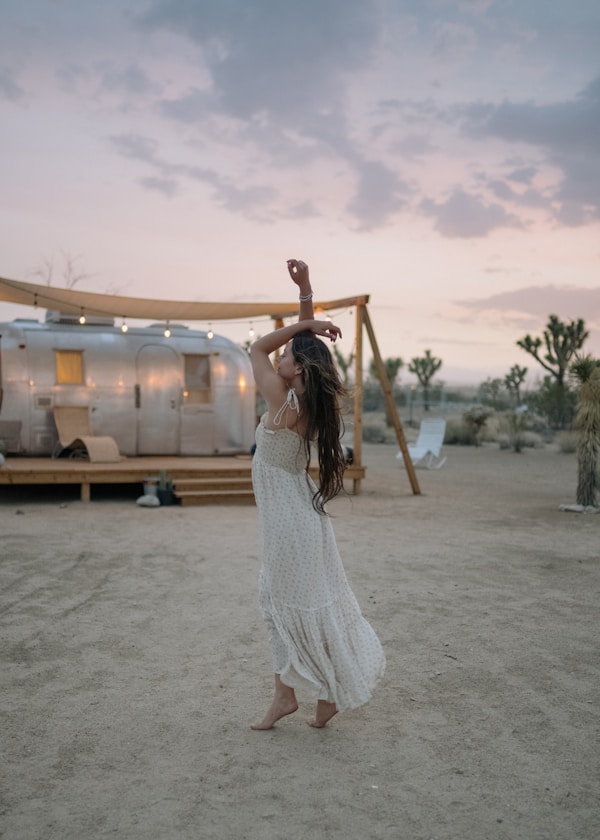The Rise of Couture Bridal Collaborations: Crafting Unforgettable Weddings
Understanding Couture Bridal CollaborationsThe wedding industry has seen an exciting evolution in recent years, with couture bridal collaborations taking center stage. These partnerships between top fashion designers and bridal brands are revolutionizing the way brides approach wedding attire. This article delves into the world of couture bridal collaborations, showcasing their significance, trends, and what brides need to know when exploring this fashionable niche.What Are Couture Bridal Collaborations?Couture bridal collaborations refer to the unique partnerships formed between renowned fashion designers and established bridal brands. These collaborations aim to merge high fashion with bridal wear, offering brides a distinctive and luxurious option for their special day. The essence of these collaborations lies in their ability to infuse creativity, elegance, and artistry into wedding dresses.Why Choose Couture Bridal Collaborations?Brides today seek individuality and exclusivity in their wedding attire. Couture bridal collaborations provide a solution that combines the artistry of high fashion with the timelessness of bridal wear. Some reasons to consider these collaborations include: Unique Designs: Couture collaborations often result in one-of-a-kind dresses, ensuring brides stand out on their wedding day. High-Quality Materials: These collaborations emphasize luxury fabrics and craftsmanship, offering unparalleled quality. Trendsetting Styles: Bridal collection...
The Ultimate Guide to a Memorable Bridal Shopping Experience
Creating Unforgettable Moments: Your Bridal Shopping ExperienceThe journey to finding the perfect wedding attire is as significant as the wedding day itself. A bridal shopping experience involves emotions, dreams, and sometimes, challenges. In this article, we'll explore how to make your bridal shopping experience a delightful adventure.Understanding the Bridal Shopping ExperienceBridal shopping is not just about choosing a dress; it's an overall experience filled with excitement and planning. This process can feel overwhelming due to numerous choices available, but with the right approach, it can also be an enjoyable milestone. Here’s a closer look at each aspect that contributes to an exceptional bridal shopping journey.Choosing the Right Wedding DressThe heart of the bridal shopping experience revolves around selecting the perfect wedding dress. With countless styles, fabrics, and colors, brides often find themselves entangled in options. Here are some popular styles to consider:StyleDescriptionA-LineThis silhouette is fitted at the waist and flows out to the ground, flattering many body types.MermaidThis form-fitting style hugs the body and flares out at the knees, perfect for showcasing curves.Ball GownThe classic princess style that features a fitted bodice and a full skirt, great for formal weddings.SheathThis style falls straight down from the neckline and works well for brides wanting a sleek look.Creating a Bridal Shopping ScheduleA well-planned schedule enhances th...
Explore the World of Fashionable Bridal Designs: A Comprehensive Guide
Introduction to Fashionable Bridal DesignsWeddings are one of the most significant milestones in a person's life, and every bride dreams of looking stunning on her special day. The quest for fashionable bridal designs has become an essential part of wedding planning. With numerous styles and trends emerging every season, brides-to-be find themselves navigating a myriad of choices. In this article, we delve into the world of fashionable bridal designs, exploring the latest trends, timeless styles, and tips to choose the perfect gown for your wedding.Understanding Fashionable Bridal DesignsFashionable bridal designs encompass a wide range of styles, fabrics, and embellishments, allowing brides to express their personalities and preferences. From vintage-inspired gowns to modern minimalist styles, fashionable bridal designs reflect current trends while integrating traditional elements.Current Trends in Bridal FashionBridal fashion is constantly evolving, influenced by cultural shifts, celebrity weddings, and designer innovations. Here are some of the most prominent trends in fashionable bridal designs:Bold Colors: Gone are the days when brides were confined to classic white or ivory. Contemporary brides are embracing vibrant colors like blush, lavender, and even deep jewel tones.Minimalist Designs: Simple silhouettes with clean lines and understated elegance are gaining popularity. These designs often emphasize quality fabrics and meticulous tailoring.Statement Sleeves: From puf...
Essential Bridal Couture Shopping Tips for Every Bride
Discover the Perfect Wedding Dress: Bridal Couture Shopping TipsYour wedding day is one of the most important days of your life, and choosing the perfect bridal couture is an essential part of that journey. With so many styles, designers, and boutiques to choose from, navigating the world of bridal couture can be both exciting and overwhelming. To help you make this experience as enjoyable as possible, we have compiled a list of practical tips to enhance your bridal couture shopping journey.Understanding Bridal CoutureBefore diving into shopping, it’s important to understand what bridal couture means. Bridal couture refers to high-end, custom-made wedding dresses that are often designed by renowned fashion designers. These dresses are characterized by their luxurious fabrics, intricate detailing, and exceptional craftsmanship.Shopping for Bridal Couture: Tips to Keep in MindTipDescription1. Set a BudgetDetermine how much you are willing to spend on your bridal couture. Don’t forget to factor in additional costs such as alterations and accessories.2. Research DesignersTake time to research various designers who specialize in bridal couture. Follow their collections online to see which styles resonate with you.3. Schedule AppointmentsMake appointments at multiple bridal boutiques to try on a variety of styles. This will provide you with a better sense of what you like and what fits you best.4. Consider Your VenueYour wedding venue can influence your dress choice. For instance, ...
The Ultimate Guide to Unique Bridal Accessories: Elevate Your Wedding Look
IntroductionPlanning a wedding is a huge task that comes with countless decisions, and one of the most exciting yet daunting aspects is choosing the right bridal accessories. These special items can transform your wedding look from ordinary to extraordinary. If you’re looking to stand out on your big day, this unique bridal accessories guide is tailored just for you. Whether you seek something vintage, modern, or bohemian, you will find everything you need to make your bridal look memorable.Why Bridal Accessories MatterBridal accessories are more than just additions to your outfit; they are a reflection of your personal style and can enhance the overall theme of your wedding. The right accessories can bring together your entire look, complementing your dress and creating a cohesive aesthetic. From headpieces to statement jewelry, the choices are endless. In this guide, we will explore various unique bridal accessories that can elevate your wedding style.Types of Unique Bridal AccessoriesExplore different types of accessories that can make your wedding outfit shine:1. HeadpiecesYour choice of headpiece can make a significant impact on your overall bridal look. Unique options to consider include:Floral Crowns: Perfect for a bohemian or rustic wedding, these crowns add a fresh and romantic touch.Vintage Combs: Antique-inspired hair combs can provide an elegant flair to your hairdo, ideal for vintage-themed weddings.Face Veils: Short veils that obscure the face slightly can creat...
Unlock the Secrets to Classic Bridal Beauty: Timeless Tips for Your Special Day
When it comes to planning a wedding, every bride wants to look her absolute best on her big day. Among the myriad of details to consider, bridal beauty tips hold a special place. In this article, we will explore classic bridal beauty tips that have stood the test of time, ensuring you radiate elegance and charm as you walk down the aisle. Let’s delve into the essentials of achieving that iconic bridal look.The Importance of Bridal Beauty PreparationYour wedding day is one of the most significant events in your life, and looking your best can enhance your confidence and joy. Classic bridal beauty tips encompass skincare, makeup, hair, and overall wellness that all contribute to a stunning bridal appearance. By focusing on timeless beauty methods, you can ensure a lasting impression for yourself and your guests.1. Skincare Regimen: The Foundation of BeautyBefore you even think about makeup, the first step in achieving a classic bridal beauty look is to invest time in your skincare. A glowing complexion is essential, and here’s how you can achieve that: Start Early: Ideally, begin your skincare routine at least three months before your wedding day. This allows your skin to adjust and respond positively to new products. Cleansing: Invest in a gentle, hydrating cleanser to remove impurities and prepare your skin for further treatments. Exfoliation: Exfoliate weekly to remove dead skin cells and promote cell turnover, but avoid harsh scrubs that could irritate your skin. Moistu...
Timeless Bridal Outfit Choices: What Every Bride Should Consider
Introduction to Timeless Bridal Outfit ChoicesChoosing the perfect bridal outfit is one of the most exciting yet daunting tasks for any bride. With countless styles, fabrics, and trends flooding the market, it’s essential to identify timeless bridal outfit choices that will not only make you look stunning on your special day but also remain fashionable for years to come. This article aims to guide you through various outfit options that transcend seasonal trends, ensuring you feel beautiful and confident.The Importance of Timelessness in Bridal FashionWhen planning a wedding, it's crucial to consider lasting styles over passing trends. Timeless bridal outfit choices offer several benefits:Longevity: A classic outfit will never go out of style.Investment: Quality materials and traditional designs lead to purchases that can be treasured for a lifetime.Versatility: Timeless outfits pair well with various accessories, allowing personalization without sacrificing the structure of the gown.Classic Bridal Gown StylesBridal gowns come in numerous styles, but a few classics are universally appreciated:StyleDescriptionExamplesA-LineFitted at the waist and flares out, resembling the letter "A". Suitable for all body types.Jennifer Aniston's classic A-Line gownBall GownFeatures a fitted bodice and voluminous skirt, perfect for a fairy-tale look.Princess Diana's iconic wedding dressSheathFollows the body shape closely, ideal for creating an elegant silhouette.Kate Middleton's stunning lac...
Discover the Chic Wedding Trends Transforming Modern Celebrations
Introduction to Chic Wedding TrendsPlanning a wedding is no small task, and with the ever-changing landscape of fashion and decor, it can become overwhelming. In recent years, chic wedding trends have emerged that not only reflect contemporary aesthetics but also add a personal touch to celebrations. This article delves into the defining characteristics of chic weddings, presents exciting new ideas, and explores relevant aspects that can help couples create their dream wedding.The Essence of Chic WeddingsChic weddings are defined by their elegant style, creative elements, and attention to detail. They often combine modern designs with classic romantic touches, making every moment feel special. Key attributes include:Minimalistic Design: Using subtle color palettes and clean lines.Unique Venues: Choosing unconventional locations such as art galleries, rooftops, or lush gardens.Personalized Elements: Incorporating meaningful details that reflect the couple’s journey together.Current Chic Wedding Trends to WatchAs we dive deeper into the chic wedding landscape, several trends are taking center stage. Each brings a unique flair that can transform any wedding into an unforgettable experience.1. Sustainable Wedding ChoicesSustainability is not just a trend; it’s a lifestyle choice becoming increasingly popular among couples planning their big day. Opting for eco-friendly practices helps reduce waste and promotes a healthier planet. Here are a few sustainable wedding ideas:Locally S...
Ethereal Wedding Dress Inspiration: Enchanting Styles for Your Dream Wedding
Introduction to Ethereal Wedding Dress InspirationWeddings are not just ceremonies; they are moments that reflect the couple's love story, and one of the most significant elements of a wedding is the wedding dress. For those dreaming of an otherworldly aesthetic, ethereal wedding dress inspiration is a captivating option. In this article, we will explore various aspects of ethereal wedding dresses, including styles, fabrics, and color palettes that will leave you enchanted.Understanding Ethereal AestheticsThe term "ethereal" refers to something delicate, light, and almost heavenly. Ethereal wedding dresses convey this sense of lightness and beauty, often featuring flowing silhouettes, intricate lace, soft fabrics, and muted color palettes. They are a perfect choice for brides who want to embrace romance and whimsy on their special day.Key Characteristics of Ethereal Wedding DressesHere are some defining traits that make ethereal wedding dresses unique: Lightweight Fabrics: Ethereal dresses often use soft materials like chiffon, tulle, or silk that flow beautifully. Delicate Details: Embroidery, lace, and airy overlays contribute to the dress's enchanting look. Subtle Color Palettes: Soft pastels, ivory, or even pale floral shades create a whimsical effect. Flowing Silhouettes: A-line or empire waist shapes tend to enhance the ethereal appearance.Popular Ethereal Wedding Dress StylesWhen searching for ethereal wedding dress inspiration, consider the following style...
Unveiling the Luxury Bridal Beauty Secrets: Your Ultimate Guide to Radiate on Your Big Day
Planning a wedding is no small feat, and when it comes to bridal beauty, the stakes are even higher. Every bride wants to look immaculate on her special day, and achieving that dream can often feel overwhelming. However, with a touch of luxury and the right beauty secrets, you can turn your bridal vision into reality. In this article, we will delve into the luxury bridal beauty secrets that will elevate your beauty routine and ensure you shine like the star you are on your wedding day.The Importance of Bridal Beauty PreparationAs the adage goes, “Beauty is pain,” but it doesn’t have to be! Taking care of your beauty regimen ahead of your wedding day helps minimize the stress and uncertainty about how you will look. Investing time and effort in your beauty routine can lead to a stunning transformation, setting the stage for an unforgettable day. Here are some reasons why you should prioritize bridal beauty preparation:Confidence Boost: Feeling beautiful boosts your confidence, making you shine brighter on your wedding day.Long-lasting Results: Luxury beauty treatments often yield long-term results, meaning you will look good beyond just your wedding day.Self-care Time: The lead-up to your wedding can be hectic. Taking time for beauty rituals is an excellent way to relax.Top Luxury Bridal Beauty SecretsNow that you understand the importance of bridal beauty preparation, let's explore some luxurious secrets that will enhance your overall appearance:1. Invest in Professional Skin...
Unlocking the Charm of Vintage Bridal Style Guides
Vintage Bridal Style Guides: A Timeless Wedding ChoiceWeddings are a beautiful occasion to express love and commitment, and choosing the right style for your big day is paramount. Among the myriad of styles, vintage bridal themes have captured the hearts of many couples. In this article, we’ll delve deep into vintage bridal style guides to help you create the ideal wedding reminiscent of timeless elegance.Why Choose a Vintage Bridal Style?Vintage bridal styles have a certain appeal that transcends time. Couples are increasingly drawn to these aesthetics for several reasons:Unique Character: Vintage styles offer an individualistic touch, allowing brides to express their distinct personality.Nostalgic Charm: Embracing a vintage theme can evoke a sense of nostalgia, weaving together the past with present love stories.Timelessness: Vintage elements are classic and never go out of style, ensuring your wedding photos remain timeless.Popular Vintage Bridal StylesThere are numerous ways to incorporate vintage themes into a wedding. Here’s a quick table summarizing popular vintage bridal styles:StyleCharacteristicsEraVictorianHigh collars, corsets, and lace embellishments1837-1901Art DecoGeometric patterns, beadwork, and luxurious fabrics1920s-1930sBohemianFree-spirited designs with floral crowns and flowing fabrics1960s-1970sRetroColorful, bold patterns, often mimicking styles from the 50s and 60s1950s-1960sEssential Tips for Curating Your Vintage Bridal LookCrafting the perfect vint...
Ultimate Guide to Couture Bridal Fittings: Elevate Your Wedding Attire
Couture Bridal Fittings: A Step Toward PerfectionWhen it comes to planning the perfect wedding, every detail counts, especially your bridal gown. The couture bridal fittings process is an essential aspect of ensuring that your wedding dress fits you like a glove, making you feel confident and beautiful on your special day. But what exactly does 'couture bridal fittings' entail, and how can you make the most of this luxurious experience? This guide delves into every aspect of couture fittings, providing you with insights and tips for making the process as smooth as possible.What Are Couture Bridal Fittings?Couture bridal fittings refer to the personalized process of fitting a wedding gown that is made specifically for the bride. Unlike off-the-rack dresses, which may require minimal alterations, couture gowns are tailored to each bride’s unique measurements and style preferences. This bespoke service ensures that every curve and contour is taken into consideration, ultimately resulting in a one-of-a-kind masterpiece.Why Choose Couture?Choosing a couture gown is often a significant investment, but the benefits far outweigh the costs. Here are a few reasons why brides opt for couture:This process provides a perfect fit tailored to your unique body shape.Brides have complete creative control over design elements from fabric to embellishments.Expert couture designers bring years of experience in fashion, offering valuable advice on styles that enhance your features.Couture dresses...
Discover the Charm of Personalized Bridal Fashion Ideas for Your Dream Wedding
Personalized Bridal Fashion Ideas: Unveiling Unique Styles for Every BrideYour wedding day is one of the most memorable moments of your life, and every detail contributes to the beauty of this special occasion. Among these details, the bridal fashion stands out as a crucial element that not only expresses your personal style but also sets the tone for the entire event. In this article, we will explore various personalized bridal fashion ideas, focusing on unique styles, trends, and customization options that can make your bridal look truly one-of-a-kind.Understanding Personalized Bridal FashionPersonalized bridal fashion involves tailoring your wedding attire to reflect your individual personality, preferences, and even cultural backgrounds. This can include custom designs, alterations, and utilizing materials that hold sentimental value. The beauty of personalized bridal fashion is that it allows brides to feel more connected to their outfit, ensuring that it is not just a dress, but a representation of their love story.Why Choose Personalized Bridal Fashion?Choosing personalized bridal fashion comes with a myriad of benefits. Here are some reasons why you should consider customizing your bridal attire: Uniqueness: Stand out from the crowd with a dress that is uniquely yours. Comfort: Customized fitting ensures comfort, allowing you to enjoy your day without any hassle. Sentimental Value: Incorporate meaningful elements such as family heirlooms into your outfit. ...
Stunning Celebrity Wedding Dress Ideas to Inspire Your Dream Wedding
When it comes to weddings, one of the most exciting aspects is undoubtedly the wedding dress. For many brides-to-be, choosing the perfect dress is a blend of personal style and inspiration from current trends. Celebrity wedding dresses often set the tone for what’s fashionable and desirable at any given moment. This article delves into some of the most iconic celebrity wedding dress ideas that can serve as inspiration for your special day.Timeless Celebrity Wedding Dress IdeasFrom simplicity to grandeur, celebrities have donned some of the most breathtaking wedding dresses in history. Below, we highlight a few trends inspired by celebrity wedding dresses, showcasing how brides can incorporate these elements into their own weddings.1. Lace and EleganceLace has been a favorite among many celebrities, adding a touch of class and sophistication to their wedding attire. For instance, Kate Middleton's Alexander McQueen gown, adorned with intricate lace sleeves and a stunning train, left a lasting impression worldwide. Lace not only offers texture and femininity but also gives the dress a timeless quality that many brides aspire to replicate.How to Incorporate Lace in Your Dress Choose a Lace Overlay: Adding a lace overlay can transform a simple dress into an elegant masterpiece. Opt for Lace Sleeves: Lace sleeves can add an element of surprise and sophistication. Accessorize with Lace: If a full lace dress is too much, consider adding lace elements through a veil or accessories....
Exploring the Best Bridal Couture Runway Looks for Your Dream Wedding
Immerse Yourself in Bridal Couture: Runway Looks to Inspire Your Wedding DayThe bridal fashion industry is a vibrant realm where creativity meets tradition, and each season unveils exciting new trends. For brides-to-be seeking to make a remarkable statement on their special day, bridal couture runway looks present an array of stunning styles that can inspire the perfect wedding ensemble. In this article, we will delve into the latest runway trends, explore how to incorporate them into your wedding attire, and answer frequently asked questions that brides may have.The Magic of Bridal CoutureBridal couture is more than just fashion; it is an art form that encapsulates personal stories, cultural elements, and the essence of romance. Renowned designers showcase their craftsmanship and vision during bridal fashion weeks, typically held in major fashion capitals like New York, Paris, and London. Here, bridal couture runway looks transform into tangible inspirations for countless brides around the world.Trends Dominating the Bridal RunwayAs we dive into the latest bridal couture trends, let’s take a look at some standout themes from recent runway shows:TrendDescriptionFloral EmbellishmentsFloral details bring a romantic touch, with intricate embroidery and three-dimensional floral appliqués becoming increasingly popular.Capes and JacketsCapes and jackets add a regal element to bridal gowns, providing versatility for both the ceremony and reception.Bold ColorsWhile white remains clas...
Unlocking the Magic: Exclusive Wedding Design Concepts for a Memorable Celebration
Exclusive Wedding Design Concepts: Curating the Perfect DayEvery couple dreams of a wedding that stands out, a celebration that reflects their unique love story. Exclusive wedding design concepts offer just that, combining personal elements, innovative ideas, and stunning aesthetics to curate an unforgettable experience. In this article, we’ll explore various exclusive wedding design concepts that can elevate your special day, ensuring it is both beautiful and memorable.The Importance of Exclusive Wedding DesignWhen it comes to planning a wedding, the design aspect plays a crucial role in creating the desired atmosphere. An exclusive design concept not only reflects the couple's personality but also sets the tone for the entire event. Here are some reasons why investing in exclusive wedding design is essential:Creating a Unique Experience: Custom designs ensure that your wedding stands out from the rest, offering guests an experience that is both immersive and unforgettable.Personal Expression: A well-thought-out design reflects the couple's style, interests, and story, making the event genuinely personal. Cohesion and Flow: Exclusive design concepts help in creating a cohesive look throughout the venue, ensuring everything from the invitations to the décor harmonizes perfectly.Trendy Exclusive Wedding Design ConceptsLet’s delve into some exclusive wedding design concepts that are currently trending and how you can implement them into your celebration.1. Sustainable WeddingsI...
The Ultimate Guide to Designer Bridal Styling: Elevate Your Wedding Day Look
What is Designer Bridal Styling?Designer bridal styling encompasses the art of curating an exquisite and personalized look for brides on their special day. By integrating high-end bridal wear with effective styling techniques, a designer bridal stylist helps brides achieve their dream aesthetic. This concept not only focuses on the wedding dress but also considers accessories, hair, and makeup, ensuring the bride shines throughout her event.Why is Designer Bridal Styling Essential?Having a professional stylist can transform a simple wedding day into an unforgettable experience. Here are several reasons why investing in designer bridal styling is essential: Expertise in Trends: Bridal stylists are well-versed in the latest trends, ensuring brides wear styles that are both fashionable and timeless. Custom Tailored Looks: A stylist can create a unique aesthetic tailored to the bride's preferences, body shape, and wedding theme. Stress Reduction: Planning a wedding can be overwhelming. A stylist eases that burden by managing the styling process and addressing any last-minute concerns. Professional Networking: Stylists often have connections with high-end designers and vendors, enabling brides to access exclusive pieces.Components of Designer Bridal StylingThe process of designer bridal styling involves several critical components, each contributing to the overall bridal look. Below are some key elements: Component Description Wedding Dress The centerpiece ...
Unveiling High-Fashion Wedding Inspiration: The Ultimate Guide for Modern Brides
Explore the Elegant World of High-Fashion Wedding InspirationWhen it comes to planning a wedding, the desire for a memorable and stylish event often takes center stage. Brides-to-be are continually seeking out high-fashion wedding inspiration to create an atmosphere that reflects their unique tastes and personalities. If you are in search of iconic styles, designer recommendations, and essential planning tips, you are in the right place. In this extensive guide, we will traverse the realms of haute couture and extravagant celebrations.Finding Your Style: Elements of High-Fashion WeddingsThe first step to achieving a high-fashion wedding is defining what style resonates with you. This involves a close look at various elements:StyleDescriptionClassic EleganceTimeless designs with elegant tones, intricate lace, and sophisticated decor.Modern MinimalismSleek lines, subdued palettes, and a focus on simplicity and functionality.Boho ChicFree-spirited elements that combine relaxed vibes with artistic flair; think floral crowns and flowy gowns.Glamorous ExtravaganceBold colors, lavish decor, and opulent accessories that demand attention.These styles can serve as a foundation for planning and can be beautifully blended to make your wedding truly unique. Remember to consider your venue's ambiance, seasonality, and personal style when selecting your wedding theme.Sourcing High-Fashion Wedding InspirationWith the rise of social media and the internet, finding inspiration for high-fashion...
Embrace Elegance with Bohemian Bridal Accessories: A Comprehensive Guide
Introduction to Bohemian Bridal AccessoriesIn the realm of weddings, every detail counts, and brides are always on the lookout for elements that reflect their unique personalities. One such trend that has captivated many brides-to-be is the bohemian bridal accessories. These accessories not only enhance the overall bridal look but also tell a story of individuality and carefree spirit. In this article, we will explore the essence of bohemian bridal accessories, delve into their various forms, and discuss how they can complete your wedding day look.What Are Bohemian Bridal Accessories?Bohemian bridal accessories are inspired by the bohemian lifestyle, which emphasizes freedom, creativity, and natural beauty. Unlike traditional wedding accessories that tend to be more formal, bohemian accessories exude a laid-back aesthetic that embraces earthy tones, organic materials, and unique designs. Brides opting for this style often incorporate pieces that reflect their authentic selves and natural surroundings.Popular Types of Bohemian Bridal AccessoriesTypeDescriptionFloral CrownsHandmade floral crowns using fresh or dried flowers, perfect for an ethereal look.Layered NecklacesDelicate chains and pendants, often featuring meaningful symbols or stones.Textured VeilsLightweight, sheer veils with lace or embroidery for a whimsical touch.Statement EarringsBold, artistic earrings made from natural stones or metals to complement bohemian gowns.Handmade BraceletsStacked bracelets that reflec...
Exploring Luxury Wedding Jewelry Options: A Guide to Choosing the Perfect Pieces
Luxury Wedding Jewelry Options: Elevate Your Big DayYour wedding day is one of the most important moments in your life, and every detail matters, especially when it comes to luxury wedding jewelry options. These exquisite pieces not only enhance your bridal look but also serve as a cherished reminder of your special day for years to come. In this comprehensive guide, we'll explore the finest luxury wedding jewelry options, covering various styles, materials, and trends to help you make informed decisions for your wedding.Understanding the Importance of Wedding JewelryWedding jewelry plays a significant role in showcasing your personal style and enhancing your wedding attire. It’s an expression of your taste and elegance. Whether you are a minimalist bride or someone who loves to make a statement, the luxury wedding jewelry options available today are vast and varied. Selecting the right pieces can complete your wedding look and reflect your personality and the theme of your wedding.Popular Luxury Wedding Jewelry Options to ConsiderJewelry TypeDescriptionNecklacesFrom delicate pendants to statement pieces, necklaces can accentuate the neckline of your wedding dress.EarringsChandelier earrings or studs can add sparkle and draw attention to your face.BraceletsElegant bangles or wrist cuffs can enhance your arms and add a touch of luxury.Tiara or Hair AccessoriesThese can be used to complete your bridal look, offering a touch of royalty.RingsBesides the engagement and wedding rin...
